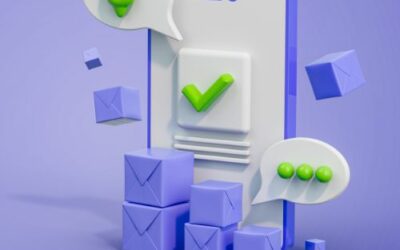In this guide:
- What is RFID Asset Tracking?
- How Does RFID Asset Tracking Work?
- How to Track High Value Assets with itemit
- Which Type of RFID Tag Should I Use?
- Passive Tags
- Active Tags
- Which Type of RFID Reader Should I Use?
- Handheld Readers
- Fixed Readers
- The Benefits of RFID Asset Tracking
- Discrete Tags
- Digitise the Assets’ History
- Easy Auditing
- Keep a Record of Your Insurance
- Protect Against Loss and Theft
- itemit’s RFID Asset Tracking
In this guide:
- What is RFID Asset Tracking?
- How Does RFID Asset Tracking Work?
- How to Track High Value Assets with itemit
- Which Type of RFID Tag Should I Use?
- Passive Tags
- Active Tags
- Which Type of RFID Reader Should I Use?
- Handheld Readers
- Fixed Readers
- The Benefits of RFID Asset Tracking
- Discrete Tags
- Digitise the Assets’ History
- Easy Auditing
- Keep a Record of Your Insurance
- Protect Against Loss and Theft
- itemit’s RFID Asset Tracking
When you invest in high value assets you want the peace of mind of knowing where they are and how they are behaving. RFID technology does just that, offering a smarter and more discrete solution than other asset tracking solutions that helps you protect your most valuable investments. Whether it’s expensive artwork, construction equipment or critical medical devices, you can track them all using RFID. With a centralised system you can log, account for and track a diverse and varied portfolio of assets all in one place. Anything from great art to fine wine can be categorised, managed, and located, along with a secure record of insurance details, valuations and the location of your unique collection.

What Is RFID Asset Tracking?
RFID stands for Radio Frequency Identification and works by using radio frequencies to broadcast the location of the tagged asset. RFID asset tracking is similar to using barcodes or QR codes to monitor the movement of assets but with RFID you can unlock greater levels of automation, transparency, and control with less conspicuous tags. Whether you work at a construction company, fine art auctions, or the healthcare industry, RFID asset tracking can transform your operations, saving you time and money.
How Does RFID Asset Tracking Work?
RFID asset tracking is essentially the linking of real-life assets to online profiles. To do this, data about the asset is contained within an RFID tag and physically attached to the asset. The asset data is stored in an online asset management system resulting in a register of uniquely tagged assets. You can interact with the online asset register and add crucial information such as maintenance plans, personnel information or asset location. Unlike barcodes and QR codes, RFID asset tracking doesn’t require a line of sight for scanning. With RFID asset tracking, your device (either a fixed or handheld reader) picks up the RFID tag. This greatly speeds up auditing assets as the only thing you need to do is pull the trigger on the RFID reader. The same is true for when you’re adding multiple assets to a new location, as itemit’s Quick Add feature speeds this process along. Keeping track of your assets has never been simpler.
How to Track High Value Assets with itemit
Track your high value assets with itemit. Our RFID technology enables you to simply tag and scan items, and photograph them for instant recognition within an asset register. RFID asset tracking allows you to make sure you know where your asset is every step of the way, from checking in to checking out and everything in between. How to track an asset with RFID technology can be broken down into three steps:
- Attach a tag to the asset.
- Scan the tag with an RFID reader.
- View the asset’s records and automatically update its location in the database.
Every time you pick up an RFID handheld reader you can locate assets tagged within its range, whilst an RFID fixed reader will pick up each time an RFID tag passes it, making it super easy to follow a trail of where your assets were last seen.
The retrieval of asset profiles is sped up this way, too, meaning that you don’t need to log changes manually on a spreadsheet later on down the line. Instead, you can update a fixed asset register while you’re physically with assets simply by using a cloud-based app.
Which Type of RFID Tag Should I Use?
Passive Tags
The various types of RFID tags offer a solution for any application. Passive tags rely on the tag reader for power and, as a result, have a transmission range of a few metres. As they don’t have an internal battery, passive tags are small in size and typically last around 20 years, resulting in a lower tag cost. Their small size also means they are able to fit into almost any package or product, making this type of tag a great choice for tracking inventory, supply chain management, and access control.
Active Tags
Active tags are typically larger in size than passive tags but usually no bigger than a smartphone. This type of tag incorporates a transmitter with a battery in a single unit. They have significant data memory and can transmit up to 2000 metres continuously or when activated by a reader’s radio signal. Their ability to cover great distances make them popular in the construction, mining, oil and gas industries. Active tags can also include environmental sensors that collect data on temperature, moisture and other metrics to help protect high-value and sensitive assets.
The most significant difference between active and passive RFID tags is that an active tag has a battery and a passive tag does not. Although an active tag can communicate at a much longer range, a passive RFID tag is often still the preferred choice as it is significantly cheaper at the point of sale as well as longer term since passive tags do not require battery replacements. In most use cases, having a shorter read range is an advantage as you can be confident that the tagged item is right in front of you or the reader.
Which Type of RFID Reader Should I Use?
To use RFID for asset tracking you need a reader. RFID readers transmit and receive radio frequencies, meaning they can read and write information to an RFID tag and to an asset tracking database where the data is stored, evaluated, and actioned. When a tag is scanned the reader receives a radio frequency from the tag encoded with information about the asset.
The information is automatically sent to the database for collecting, logging and processing. An RFID reader is the brain of the RFID system, without it the system can’t function.
RFID readers come in two main types: handheld readers and fixed readers.
Handheld Readers
Handheld readers have integrated antennas and displays making them completely mobile. This type of reader is easy to use and allows for immediate interaction with data, making it ideal for on-the-go applications like stocktaking multiple assets and tag programming. The great benefit of this type of reader is its combination of flexibility and functionality.
Fixed Readers
Fixed readers offer a more powerful solution but are positioned in a fixed location at your site or building. This type of reader normally requires an external antenna that can track the direction the asset is moving in. You can position fixed readers at tactical positions across your sites and any movement an asset goes through will be automatically logged. This enables your online register to be continually updated without the need for any manual interaction. The great level of automation makes fixed readers ideal for warehouses, store rooms, hospitals, laboratories and many more large-scale operations.
With itemit you can combine the advantages of handheld and fixed readers by using them in tandem. Enjoy the freedom of movement that comes with handheld readers along with the full automation of fixed readers. And with a fixed reader, you’ll know instantly if an asset has gone missing. Use itemit’s award-winning fixed RFID asset tracking functionality for full, off-the-shelf automation.
The Benefits of RFID Asset Tracking
1. Discrete Tags
If your team is responsible for high-value assets then you need a discrete asset tagging solution that stays out of plain sight. With RFID you can hide tags on priceless paintings or fine wine in a way that isn’t possible when using QR codes and barcodes. One of the great advantages of RFID is not needing line of sight to the tag in order to detect it. This means that you can have a tag stuck on the back of a painting so that it remains hidden. At the same time, when performing a stock check of assets, the RFID reader is still able to detect the tag on the back of the painting.
2. Digitise the Assets’ History
Not only are the team able to track the whereabouts and value of the assets but they have also been able to digitise the asset’s history. Attachments are added to each asset’s digital profile where they are safely stored and preserved. This includes unique pieces of history, letters and photographs which will never become lost.
3. Easy Auditing
With RFID asset tracking you can quickly and easily retrieve a pdf report of your complete asset register whenever you need to. Create unique reports to assist with auditing your high value collections. The location of each asset can be recorded and updated simply by scanning the asset’s tag. This means you’ll have full visibility of where your assets are.
4. Keep a Record of Your Insurance
Using our asset tracking software you can create an online asset profile and add relevant information to it, such as who the assets are assigned to, issues for maintenance and even critical insurance information. Asset tracking software is an all-encompassing, centralised system that allows you to organise and track important details about each asset in real time. Maintain a record of all the insurance information you need, including insurance details, current value, insured value and more. Complete your asset records by adding photos, proof of purchase, certificates and tag data.
5. Protect Against Loss and Theft
Tagging and tracking your high value assets helps to lower the risk of theft, loss and unauthorised usage. Asset tags create a greater theft deterrent, keeping your assets safe no matter where they are. And, thanks to asset profiles, any time an asset is scanned you can see who is responsible for it. The increased visibility and accountability and a greater peace of mind when your high value collections are on the move.
itemit’s RFID Asset Tracking
Tagging and tracking high-value assets isn’t just about auditing and accounting but also about preserving these assets and their own unique history for future generations. With RFID asset tracking you can maintain a complete and up-to-date asset register of your prized collections.
Optimise your operations with itemit’s RFID asset tracking solutions. Asset tracking has never been faster, easier, or more transparent. And with fixed RFID readers you can completely revolutionise your operations with full automation. itemit is your one-stop shop for RFID readers, tags and software. Get everything you need to manage your high value assets, collect data and deliver timely information.
If you’d like to find out more information please contact the team at team@itemit.com or you can get started straight away and try the 14-day free trial by filling out the form below!
RFID Asset Tracking
Choose a better way to track your assets
Start your free 14-day trial now
Instant access. No credit card details required.
Related articles
IT Asset Management Made Simple
Having trouble organising your IT assets? Read this post now to find out how using IT asset inventory software can help immensely!
What IT Asset Management Is And Why You Need it
An IT asset management system can make a huge difference in your workplace. It can help you to have more control over your IT assets. Read more here!
Tips For Managing Your Office Inventory
Want to make your working days easier by managing your office inventory? Read this article now to find out how an IT asset management tool can help!




